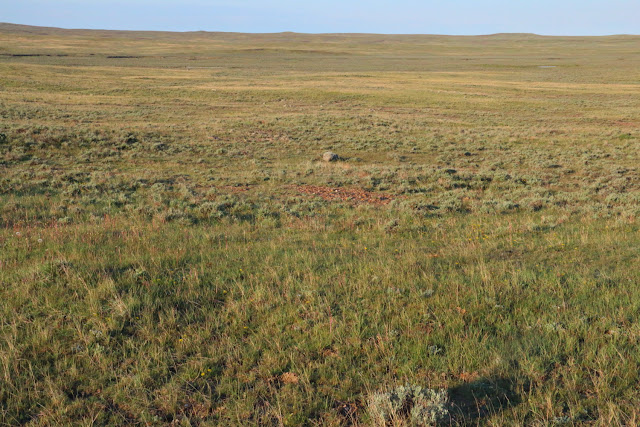Blog #5. North Dakota and Minnesota Prairies
18-20 May 2020
I rose
early at the Green Valley campsite in Glendive, Montana, and broke camp and drove
east to Theodore Roosevelt National Park (south unit), adjacent to the tourist
town of Medora, ND. I was here last year and much enjoyed the stay.
This
morning I found that the Cottonwood Campground was closed, but part of the road
system was open. So I drove the roads in search of wildlife. The deciduous
trees still have that wintery look—no bud break! This is because of elevation.
Higher and colder... I did find Mule Deer and Bison, but no Sprague’s Pipit, a
species that has haunted me (I had had a single glimpse of a flying bird on the
Bentonite Road).
The two
Black-tailed Prairie-Dog colonies in the Park were busy with spring activity,
so I spent most of my time there, hoping for other creatures attracted to the
activity. Black-billed Magpies and a Western Kingbirds were about all...
I left the
Park and drove east on I-94 to Bismarck, where I stopped for lunch and some trip
planning. The wind on the prairie was ripping this morning. I stopped for
gasoline at Richarton and the wind pulled the door out of my hand as I opened
it and nearly ripped it off the frame—gusting to some 40 mph...
American Bittern
Searching
online, and making some calls, I found an open state park 6 miles south Mandan,
just to the southwest of Bismarck. This is where I will spend the evening
tent-camping. Fort Abraham Lincoln State Park is the site of a former US Army
Fort, and before that a Mandan Indian village, right on the west bank of the
Missouri River. The first post commander of the expanded fort in 1876 was
Lieutenant Colonel George A. Custer. It was from this base that he launched the
Great Sioux War of 1876-77, which led to his death at the Battle of Little
Bighorn.
which cottontail?
The Park
is nicely situated and there are some nice Cottonwood stands that attract
migrant songbirds. The river itself was pretty quiet, bird-wise. I spent the
afternoon and evening bicycling around the park in search of birdlife. The wind
continued...the mortal enemy of bird-watchers!
White-faced Ibis flock
The next
morning I broke camp and set out to the eastward to visit three sites where
Sprague’s Pipit had been reported this spring. These sites produced none of the
desired pipits.
Ring-necked Pheasant cock
I also
visited an eBird site near Bismarck that had reported Hudsonian Godwit, but,
again, no luck. Then I drove east to Fargo, ND, and visited another eBird site
for HUGO, and again, no luck.
Western Meadowlark
I spent
the night camping in urban Lindenwood Park in downtown Fargo, right next to
I-94. My tent was set within 75 meters of the busy highway. Thank heavens the
sound of rushing cars became white noise in the night. I used my time in Fargo
to wash clothes in a laundromat and also to scout out sites that had reported
Greater Prairie-Chicken, a bird I wanted to photograph in display.
Trumpeter Swans
Early the
next morning I broke camp in the dark in Fargo and drove east to Felton
Prairie, Shrike Unit, in the prairie of western Minnesota. This is a pretty
site, with some nice habitat.
No sign of
Prairie-Chickens, but I did spend time communing with a breeding pair of Marbled
Godwits, and also Sedge Wrens, Bobolinks, Western Meadowlarks, Trumpeter Swans,
and winnowing Wilson’s Snipes. No sign of the Le Conte’s Sparrows that had also
been reported on eBird. In late May, the prairie is bursting with bird song in
the early morning, and is a lovely place to be.
Marbled Godwit at Felton Prairie
Next, I
head east into the boreal forests of Minnesota, to witness the arrival of the
migrant songbirds at Greenwood Lake and Sax-Zim Bog. This will be reported in
my next Blog.
Spotted Towhee in Makoshika State Park, Glendive, MT





























































